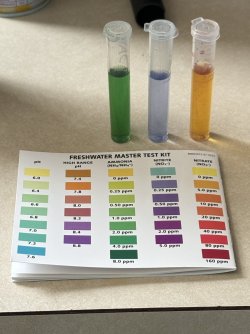I disagree with some of the advice in this thread.
First there are only two bacterial starter products which contain the proper strains of bacteria: Dr. Tim;s One and only or Tetra's Safe Start.
They both contain Nitrospia bacteria which other products cannot as they are patented.
If you use these properly, a single addition is all that is needed. You can put in more than you need, but that is pretty much a waste of money as they will not all survive. The amount of bacteria in any cycled tank is what is needed to handle the ammonia being produced in that tank. If more ammonia is produced, then the bacteria will multilpy in response and they will catch up to the new loading pretty fast (unless it is a really insane increase).
If the ammonia load in the tank decreases, then the bacteria will stop reproducing for the mast part and the natural death rate will result in the amount of bacteria decreasing until it is again in balance with the ammonia loading.
I prefer not to remove media from a cycled tank. That risks having a spike in that tank depending upon the situation. Instead what I prefer to do is to take some of the media from the established tank's filter and rinse it out in the new tank being cycled. This will add some of the bacteria in the media to the water of the new tank. Some will get into the filter and some will fall tho the substrate. Both are places where the bacteria thrive.
I rarely cycle a new tank or tanks in the traditional fashion. Since I am usually setting up multiple new tanks I prefer to cycle a bunch of filters in a biofarm. Bu this is way more complicated than cycling a single tank. If I need a tank up fast I will also use live plants. Most recently I set up a new tank for some pretty new corys (Hoplisoma cw111) in 4-5 days using some Dr. Tim's, squeezing out some foams from an established filter and taking some plants from a few of my tanks. I do not do many stem plants which are great ammonia users. So I bought a few for the tank to be extra safe.
The fish have been in the tank now for almost 2 weeks and are doing great.
There are basically two main factors which determing the speed with which a tank can be cycled. These are the amount of bacteria at the outset and then the concentration of ammonia for which the tank needs a solution. A tank lightly stocked and with live plants needs less bacteria developed. But, if one wants to fully stock a tank at the outset, then a proper fishless cycle using seed bacteria and live plants is usually the fastest way.
As noted warmer water and a higher pH accellerate a fishless cycle, but then one must change the temp and pH back to norrmal levels before adding fish. It is also important when adding bacteria to turn off the lighs and leave them off for a day as the bacteria are somewhat photophobic.
It might help to read the article here
https://www.fishforums.net/threads/cycling-your-new-fresh-water-tank-read-this-first.421488/ The parts on what is needed for the bacteria to thrive and how to troubleshoot the potential fishless cycling problemss which may arise and what to do if you have them should be helpful.




